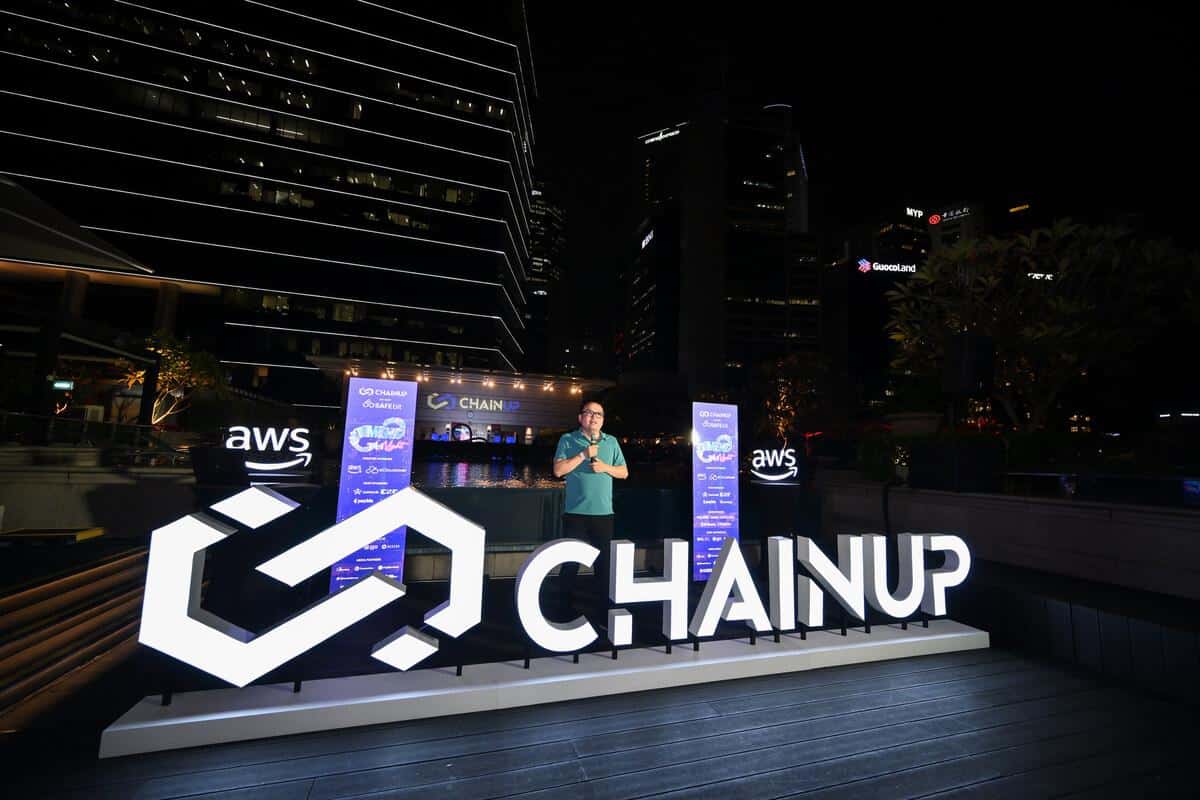SINGAPORE, Oct. 16, 2025 /PRNewswire/ — As the digital asset industry evolves from a speculative frontier into a core pillar of global finance, ChainUp is celebrating its eighth anniversary by reaffirming its commitment to building secure, compliant infrastructure that powers this new era. This milestone highlights a strategic vision aimed at meeting the accelerating demand for institutional-grade digital asset solutions, with a clear focus on scaling in the world’s most dynamic markets.
“The demand for institutional-grade solutions is driving the next wave of global digital asset growth. This is no longer an industry of a few pioneers, but an ecosystem built for sophisticated businesses that require trust and security at their core,” said Sailor Zhong, Founder & CEO of ChainUp. “Our focus has always been on providing the essential infrastructure that builds trust in this industry, and the market’s overwhelming response validates that vision.”
**Institutional Momentum Reshaping the Market**
The broader digital asset landscape is entering a new growth phase, driven by regulated products, tokenized assets, and increased participation from traditional finance. Key indicators of this structural shift include:
– **ETF Expansion:** Global Bitcoin ETFs have surpassed US$153 billion, highlighting soaring institutional interest. This momentum is creating a powerful spillover effect into corporate treasury strategies, giving treasurers and CFOs the confidence to consider holding digital assets directly on their balance sheets. As new crypto-related exchange-traded product (ETP) approvals accelerate, digital assets are becoming a normalized component of modern financial portfolios.
– **Regulatory Clarity:** Landmark events such as the passage of the GENIUS Act, which provided crucial clarity to stablecoins, along with new frameworks streamlining spot ETF approvals, are creating a more predictable and favorable environment for digital asset adoption in major global markets.
– **Tokenization’s Ascent:** Assets Under Management (AUM) for tokenized funds have nearly quadrupled over the past year as institutions embrace on-chain liquidity. This signals a clear transition toward a financial system built on secure, digital rails.
– **Market Convergence:** Leading crypto exchanges are progressing toward a Universal Exchange (UEX) model that unites digital assets, tokenized securities, and traditional markets within a single ecosystem.
**A Strategic Roadmap for a Digital-First Future**
With institutional adoption accelerating, ChainUp is well-positioned to lead the industry’s next chapter by delivering the infrastructure required for secure, compliant, and scalable digital finance. The company’s strategic vision is based on a multi-pillar approach:
### The Foundation of Trust: Institutional Custody
The institutional digital asset custody market is experiencing unprecedented growth. This increase is driven not only by ETFs but also by a fundamental shift in how corporations manage their reserves. With over $113 billion in Bitcoin held in corporate treasuries, demand for secure, professional crypto asset management is at an all-time high.
ChainUp’s zero-incident security record over the past eight years underscores its commitment to providing the ultimate safeguard for digital assets. Utilizing advanced technologies such as multi-party computation (MPC), ChainUp’s institutional-grade custody solution serves as the essential bridge between traditional finance and the crypto economy.
### Driving Value: Real-World Assets (RWAs) Tokenization
Tokenization of real-world assets has emerged as a key trend, with the market projected to reach $10 trillion by 2030. ChainUp’s infrastructure directly addresses this growing market by offering secure, scalable models needed to unlock trillions in value.
The company’s white-label tokenization platform enables the creation, management, and secure custody of diverse assets, including tokenized private equity, commodities like gold, real estate, fine art, intellectual property, and more.
### A Regulatory Backbone: Compliance-First Infrastructure
Navigating a complex and evolving regulatory landscape remains a top priority for institutional clients. ChainUp’s infrastructure is designed to meet this challenge with modular solutions that quickly adapt to new international standards.
Complemented by a suite of compliance tools and advisory services, this approach empowers businesses to achieve regulatory clarity, mitigate legal risk, and conduct thorough due diligence and risk assessments in an increasingly regulated environment.
### Real-World Utility of Crypto: Infrastructure for the Digital Economy
The global stablecoin market is projected to exceed US$3.7 trillion by 2030, establishing stablecoins as a key driver of transactional volume. ChainUp is positioned to power this growth by providing secure infrastructure for crypto real-world utility, including next-generation payment solutions designed to seamlessly integrate digital assets into everyday transactions for both businesses and consumers.
**A New Frontier: Global Strategic Expansion**
With key markets such as North America and Europe leading in regulatory clarity and institutional adoption, they represent a central pillar of ChainUp’s expansion strategy. The company is committed to building a strong presence in these dynamic regions, leveraging recent regulatory progress to accelerate its delivery of secure, compliant infrastructure. This move aims to attract a broader client base and support ChainUp’s global scaling ambitions.
**Pioneering the Future of Digital Assets**
To celebrate its eight-year milestone, ChainUp recently hosted “The All-Time High (ATH) Night” in Singapore. The exclusive event, held ahead of the globally acclaimed TOKEN2049 conference, brought together over 400 industry leaders and partners to discuss the critical infrastructure needed for mainstream digital asset adoption.
Commenting on the industry’s maturation and ChainUp’s role, Chung Ho, Chief Operating Officer of ChainUp, said, “This is an industry moving from promise to purpose. Our focus remains on empowering our clients to drive the future of digital assets by delivering trusted, secure, and scalable solutions that turn their vision into value in every major market—from Asia to EMEA and the U.S.”
**About ChainUp**
ChainUp, founded in 2017 and headquartered in Singapore, is a leading global provider of digital asset solutions. The company empowers businesses to navigate the complexities of the evolving digital economy, serving a diverse clientele that ranges from Web3 companies to established financial institutions.
ChainUp’s comprehensive suite of solutions includes crypto exchange technology, liquidity solutions, white-label MPC wallets, KYT crypto tracing analytics, asset tokenization, crypto asset management, and Web3 infrastructure such as mining, staking, and blockchain APIs.
https://usethebitcoin.com/crypto-live-feed/chainup-marks-8-year-anniversary-as-institutional-demand-for-crypto-infrastructure-surges/
